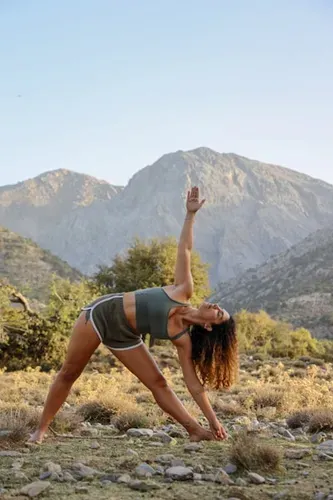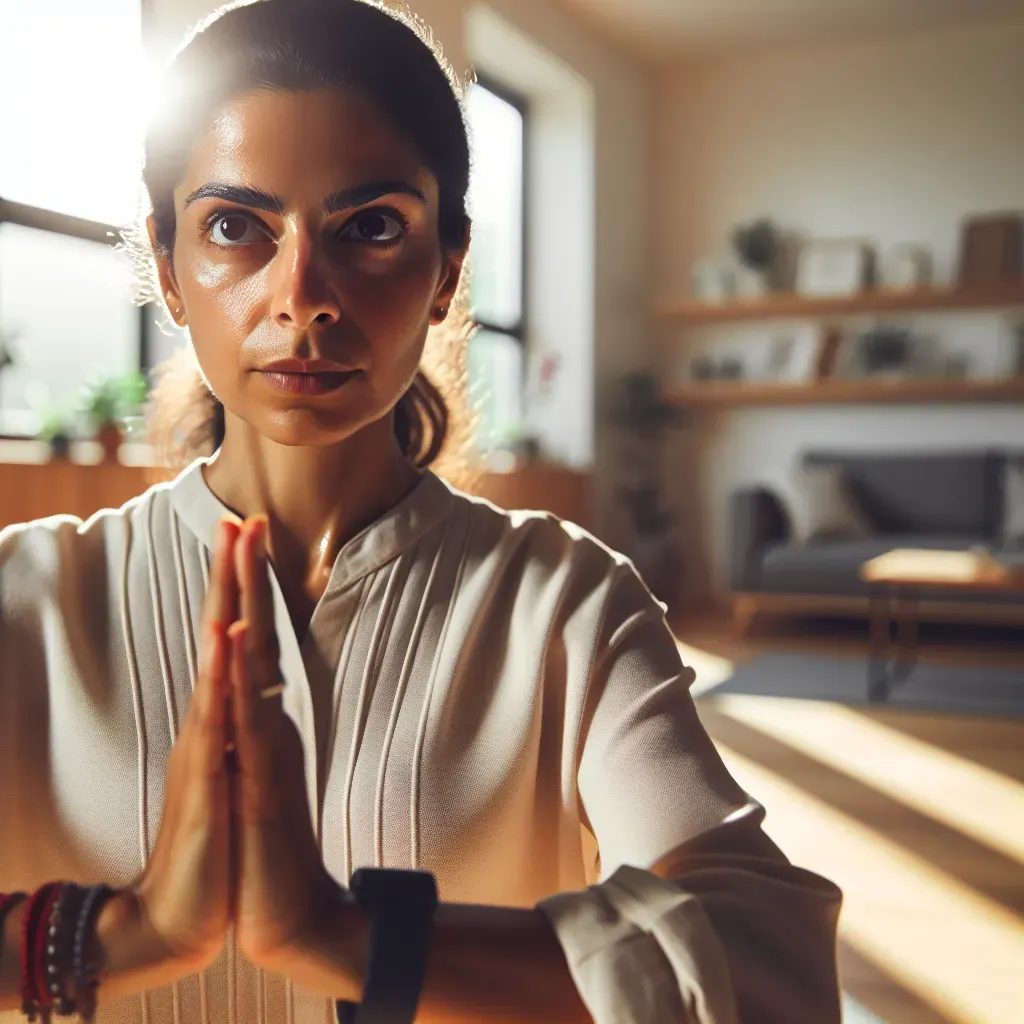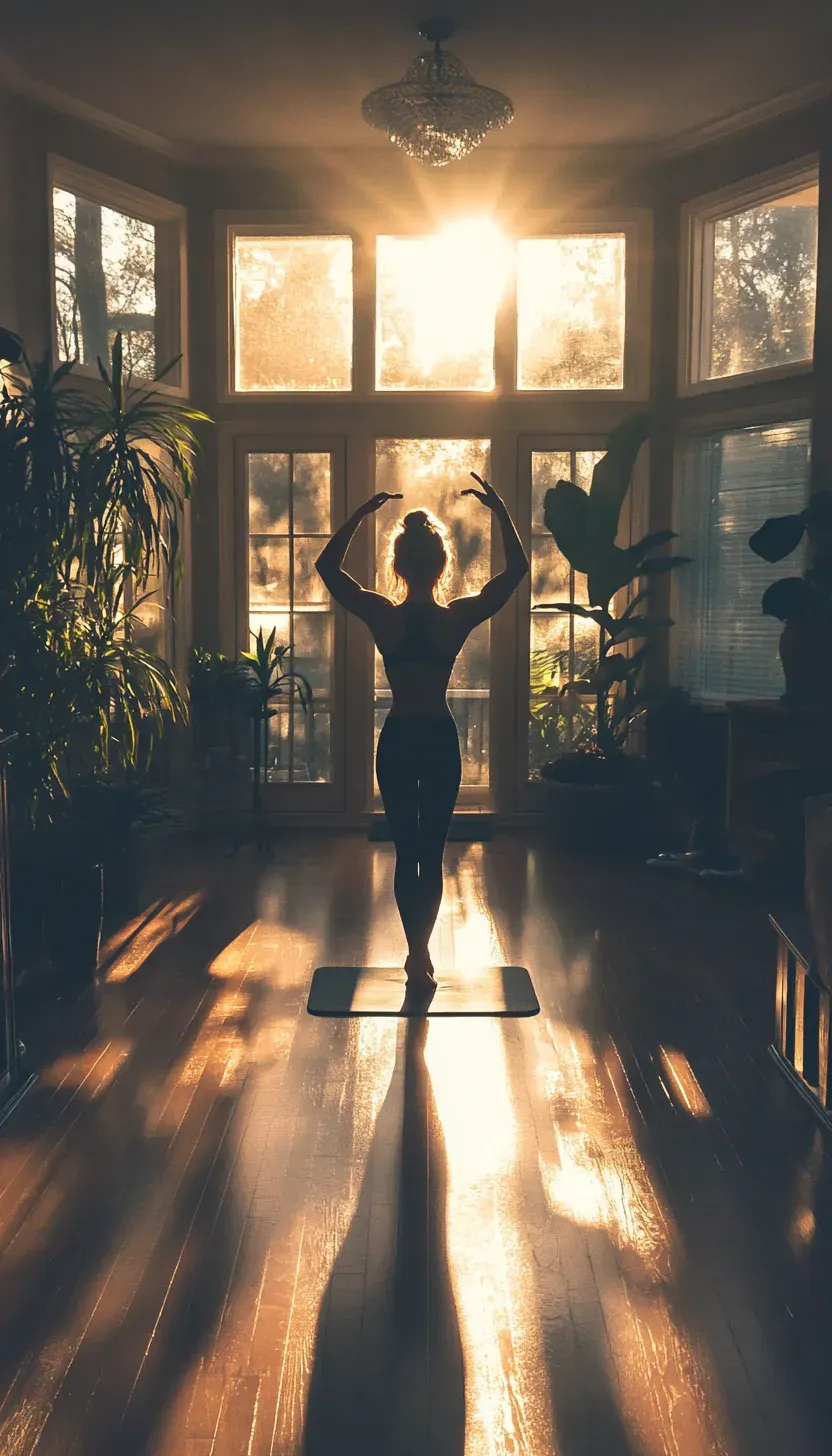Unlock Sciatica Relief With These Unexpected Yoga Poses
Are you tired of that nagging pain in your backside? Sick of feeling like you're stuck in a never-ending battle with sciatica? I hear you. You're not alone in this struggle.
Picture this: you wake up, ready to tackle the day, only to be greeted by that familiar twinge shooting down your leg.
Frustration sets in. You've tried everything - pills, potions, even standing on your head - but nothing seems to work. Sound familiar?
Well, guess what? It's time to shake things up. Say goodbye to conventional methods and hello to something unexpected.
You might be skeptical, and that's okay. I get it. But what if I told you there's a way to find relief that doesn't involve contorting yourself into a pretzel or spending hours on a massage table? Intrigued? You should be.
So, buckle up because we're about to embark on a journey that promises to flip the script on sciatica relief.
We're diving deep into the world of yoga - not your typical downward dog and warrior poses, mind you - but some seriously surprising moves that could be your ticket to freedom from that pesky pain.
Ready to give it a shot? Let's dive in and discover how these unexpected yoga poses might just be the game-changer you've been searching for.
Understanding Sciatica Pain:
- What is Sciatica: Sciatica refers to pain that radiates along the path of the sciatic nerve, which branches from your lower back through your hips and buttocks and down each leg. It's typically caused by compression or irritation of the sciatic nerve, often due to a herniated disk, bone spur on the spine, or narrowing of the spine (spinal stenosis).
- Common Symptoms: Readers may experience a variety of symptoms, including sharp or shooting pain that radiates from the lower back down the leg, tingling or numbness in the leg or foot, weakness in the affected leg, and difficulty moving the leg or foot.
- Personal Touch: Many individuals who suffer from sciatica understand the frustration and impact it can have on daily life. Whether it's struggling to get out of bed in the morning or feeling limited in activities, the experience of sciatic pain is often deeply personal and disruptive.
The Butterfly Pose:
- Relatable Scenario: Imagine waking up to that familiar bolt of pain shooting down your leg, reminding you that your sciatica is still there. It's a frustrating start to the day, but what if there's a simple solution that doesn't involve medication or complex therapies?
- Simplicity and Effectiveness: The Butterfly Pose offers a straightforward yet effective way to ease sciatic pain. By sitting on the floor with the soles of your feet together and knees bent out to the sides, you can gently flap your knees up and down like butterfly wings, releasing tension in the hips and lower back.
- Beyond Stretching: While the Butterfly Pose provides a gentle stretch, its benefits extend beyond mere muscle relief. This pose also promotes improved blood circulation to the lower body, helping to deliver vital nutrients and oxygen to areas affected by sciatic pain.
The Twisted Lizard Pose:

- Introduction to the Piriformis Muscle: Meet the piriformis muscle, a small but mighty culprit behind sciatic pain. Nestled deep in the glutes, this muscle can wreak havoc when tight or inflamed, exacerbating sciatica symptoms.
- Dual Benefits: Enter the Twisted Lizard Pose, a yoga posture that not only targets the piriformis but also offers digestive benefits. By twisting the torso towards the bent knee and bringing the opposite elbow to the outside, you'll feel a deep stretch in the hip while also aiding digestion and reducing bloating.
- Accessibility: Despite its name, the Twisted Lizard Pose is accessible to yogis of all levels. Whether you're a beginner or a seasoned practitioner, modifications can be made to suit your comfort and flexibility level.
Supported Bridge Pose With A Block:
- Spinal Traction and Relaxation: Let's talk about traction - not the kind you experience in rush hour traffic, but the gentle pulling apart of the spine. Supported Bridge Pose with a Block offers this therapeutic traction, relieving compression on the sciatic nerve while inducing a state of deep relaxation.
- Encouraging Self-Care: While managing sciatic pain, it's crucial to prioritize self-care. Supported Bridge Pose provides an opportunity to unwind and nurture your body, reminding you to carve out time for your well-being amidst life's demands.
Standing Forward Bend With Chair Support:
- Acknowledging Challenges: Bending over with sciatica can be daunting, but Standing Forward Bend with Chair Support offers a supportive approach. By using a chair for stability, you can safely ease into the forward fold, experiencing relief for your hamstrings and decompression for your spine.
- Posture and Balance Benefits: Beyond pain relief, this pose promotes improved posture and balance. By gently stretching the hamstrings and spine, you're not only alleviating sciatica but also cultivating strength and stability from the ground up.
- Encouragement to Try: Despite any reservations, this pose invites readers to step outside their comfort zone and explore new possibilities. With the support of a chair, you can approach the forward fold with confidence, knowing that relief and empowerment await.
Reclining Hand-To-Big-Toe Pose (Supta Padangusthasana):
- Addressing Hamstring Tightness: Tight hamstrings often contribute to sciatic discomfort, but Reclining Hand-To-Big-Toe Pose offers a gentle solution. By using a yoga strap for support, you can gradually release tension in the hamstrings while enjoying a moment of mental relaxation.
- Tips for Support: Utilizing props like a yoga strap ensures that readers can customize the pose to their needs. Whether it's adjusting the strap length or modifying the leg position, there's flexibility to accommodate individual comfort levels.
- Embracing Relaxation: As you recline in this pose, allow yourself to surrender to the sensation of release. Let go of tension in both body and mind, finding solace in the present moment and the simple act of breathing.
Seated Spinal Twist (Ardha Matsyendrasana):
- Addressing Spinal and Hip Tightness: Amid sciatica discomfort, spinal and hip tightness can compound the issue, leading to further discomfort and limited mobility. Seated Spinal Twist offers a gentle yet effective solution, allowing the spine to gently twist and release tension, while also targeting tightness in the hips. Through regular practice, this pose can help to increase flexibility and range of motion in both the spine and hips, alleviating strain on the sciatic nerve.
- Detoxification and Digestive Benefits: Beyond its physical benefits, Seated Spinal Twist also holds profound detoxification and digestive benefits. By wringing out tension from the spine and stimulating abdominal organs, this pose aids in the elimination of toxins and waste from the body, promoting optimal digestive function. As you twist and release, envision yourself shedding not only physical tension but also emotional and energetic blockages, leaving you feeling lighter and more vibrant.
- Modifications for Different Levels: Whether you're a seasoned yogi or just beginning your journey, Seated Spinal Twist offers modifications to suit your individual needs and abilities. For beginners, utilizing props such as a yoga block or bolster can provide support and stability, allowing you to ease into the pose with greater comfort. Advanced practitioners may choose to deepen the twist by binding the arms or extending the legs into a full expression of the pose. Whatever level you're at, honour your body's unique needs and limitations, and remember that the true essence of yoga lies not in achieving perfection but in embracing the journey of self-discovery and growth.
Legs-Up-The-Wall Pose (Viparita Karani):
- Importance of Circulation: Inflammation often accompanies sciatic pain, exacerbating discomfort and limiting mobility. Legs-Up-The-Wall Pose offers a simple yet powerful way to promote circulation, helping to reduce inflammation and alleviate symptoms. By elevating the legs above the heart, gravity assists in the return of blood flow to the heart, improving circulation throughout the body.
- Stress Reduction: As you settle into Legs-Up-The-Wall Pose, allow yourself to surrender to a state of deep relaxation. By releasing tension in the body and quieting the mind, you can experience profound stress reduction. This pose serves as a sanctuary of tranquillity, offering a respite from the chaos of daily life.
- Prioritizing Self-Care: Amidst the hustle and bustle of life, it's essential to carve out moments for self-care. Legs-Up-The-Wall Pose presents an opportunity to prioritize your well-being, even amidst the demands of work, family, and other responsibilities. By dedicating time to nourishing your body and mind, you're investing in your overall health and happiness.
Corpse Pose (Savasana):
- Culmination of Relaxation: Enter Savasana, the ultimate surrender to relaxation. As the practice draws to a close, allow yourself to fully let go, releasing any lingering tension in the body and mind. Savasana serves as the culmination of your yoga journey, inviting you to embrace a state of profound peace and stillness.
- Role in Mindfulness and Self-Awareness: In the quietude of Savasana, cultivate mindfulness and self-awareness. Tune into the sensations of your breath, the rhythm of your heartbeat, and the subtle movements of energy within your body. Savasana offers a sacred space for introspection and inner exploration, fostering a deeper connection to oneself.
- Embracing the Present Moment: As you recline in Savasana, surrender to the present moment in all its simplicity and beauty. Let go of worries about the past or future, and instead, bask in the serenity of the here and now. Savasana reminds us to cherish each moment as it unfolds, allowing us to fully inhabit the present and find contentment in the present moment.
Finding Relief: Embracing Your Journey
Throughout this exploration of unexpected yoga poses, we've embarked on a journey of discovery and healing. From the gentle embrace of the Butterfly Pose to the profound relaxation of Corpse Pose, each asana has offered a unique pathway to relief from sciatica pain.
In our quest for relief, we've uncovered not only physical benefits but also profound shifts in mindset and well-being. Through
the practice of yoga, we've tapped into our innate capacity for resilience and self-care, finding solace and empowerment amidst the challenges of sciatica.
As we reflect on this journey, let us remember that hope is not merely a distant dream but a tangible reality within our grasp. Each time we step onto the mat, we reclaim agency over our bodies and our lives, refusing to be defined by pain or limitation.
So I urge you, dear reader, to seize control of your journey towards relief. Embrace these unexpected yoga poses as tools for transformation, knowing that with dedication and perseverance, relief is within reach.
As you continue on your path, remember that you are not alone. Draw strength from the community of fellow seekers, and know that support and encouragement are always available to you.
So let us take this moment to affirm our commitment to our well-being and our capacity for healing. Let us honour the wisdom of our bodies and the resilience of our spirits.
Together, let us rise above the constraints of pain and limitation, embracing a future filled with possibility and vitality. The journey towards relief may have its challenges, but with each breath, each stretch, and each moment of mindfulness, we move one step closer to freedom.
So I invite you to join me in embracing these unexpected yoga poses, not just as exercises for the body, but as catalysts for transformation and renewal. Let us step forward with courage and conviction, knowing that the power to heal lies within each of us.
With unwavering determination and boundless hope, let us embark on this journey together, towards a life free from the grip of sciatica pain.
People Also Asked
1. What is sciatica, and why does it cause pain?
Sciatica refers to pain that radiates along the path of the sciatic nerve, typically caused by compression or irritation of the nerve roots in the lower back. Common causes include herniated discs, bone spurs, or spinal stenosis.
2. Can yoga help with sciatica relief?
Yes, yoga can be highly effective in relieving sciatica pain. Certain yoga poses help to stretch and strengthen muscles, improve circulation, and reduce inflammation, all of which can alleviate sciatic discomfort.
3. Which yoga poses are best for relieving sciatica pain?
Some unexpected yoga poses that are particularly beneficial for sciatica relief include the Butterfly Pose, Twisted Lizard Pose, Supported Bridge Pose with a Block, Standing Forward Bend with Chair Support, Reclining Hand-To-Big-Toe Pose, Seated Spinal Twist, Legs-Up-The-Wall Pose, and Corpse Pose.
4. Are these poses suitable for beginners?
Yes, many of these poses can be modified to accommodate beginners. It's essential to listen to your body and start slowly, gradually increasing intensity and duration as you become more comfortable.
5. How often should I practice these yoga poses to experience relief?
Consistency is key when it comes to yoga practice for sciatica relief. Aim to incorporate these poses into your daily routine, even if it's just for a few minutes each day. Regular practice can help maintain flexibility and reduce tension in the affected areas.
6. Can I still practice yoga if I have severe sciatica pain?
It's essential to consult with your healthcare provider before beginning any new exercise regimen, especially if you have severe sciatica pain. While yoga can be beneficial for many individuals with sciatica, certain poses may need to be modified or avoided depending on your specific condition.
7. Are there any precautions I should take while practising these poses?
Listen to your body and never push through pain. If you experience any discomfort or strain during a pose, back off and modify as needed. It's also essential to maintain proper alignment and engage in deep, mindful breathing throughout your practice.
8. How long should I hold each pose?
The duration of each pose can vary depending on your comfort level and experience. Start with holding each pose for 30 seconds to a minute and gradually increase the hold time as you become more accustomed to the pose.
9. Can I combine these yoga poses with other forms of treatment for sciatica relief?
Absolutely. Yoga can complement other forms of treatment for sciatica, such as physical therapy, medication, or chiropractic care. Be sure to communicate with your healthcare provider to create a comprehensive treatment plan that addresses your individual needs.
10. When can I expect to see results from practising these yoga poses?
Results may vary depending on the severity of your sciatica and your consistency with yoga practice. Some individuals may experience immediate relief, while others may notice gradual improvement over time. Patience and dedication to your practice are key to achieving long-lasting relief.





